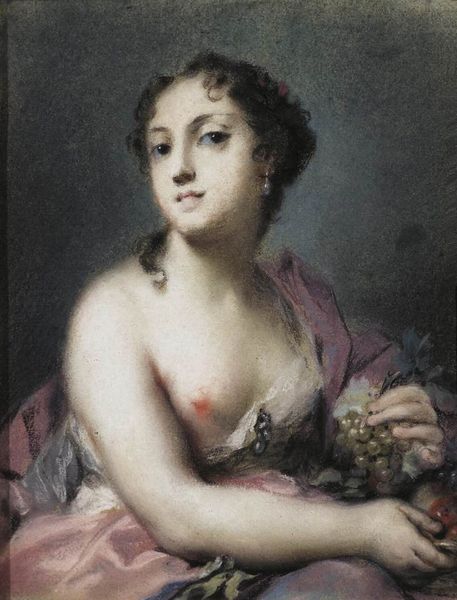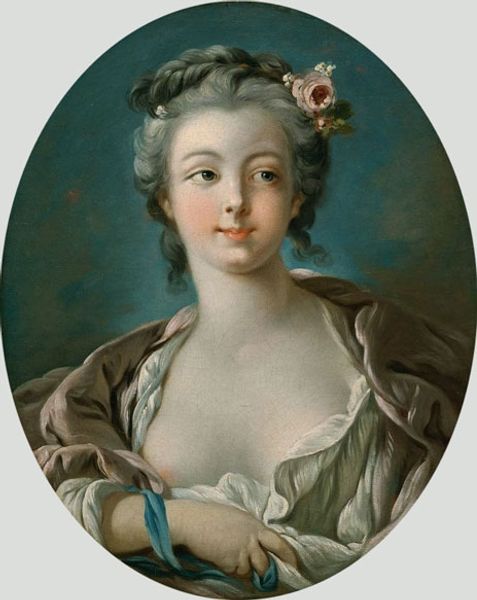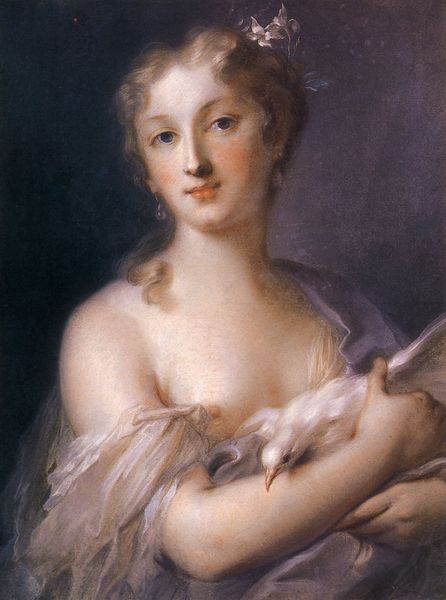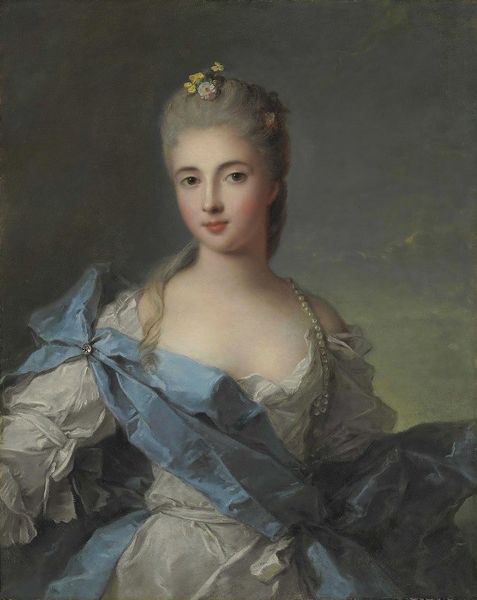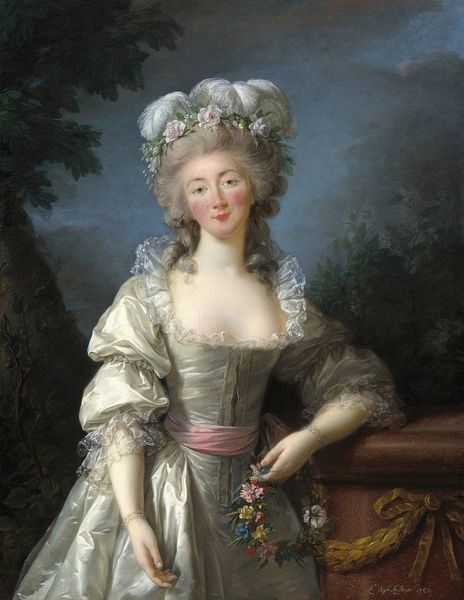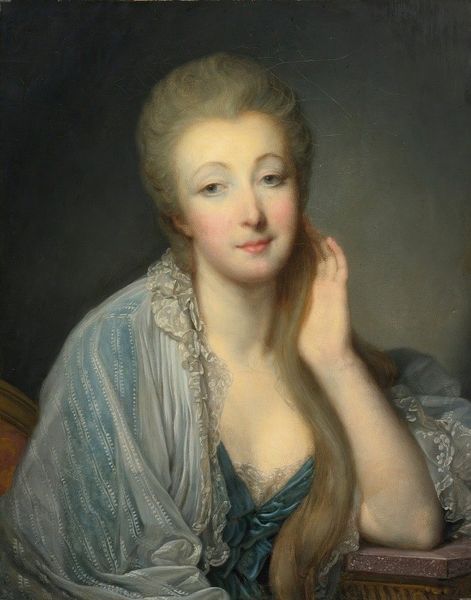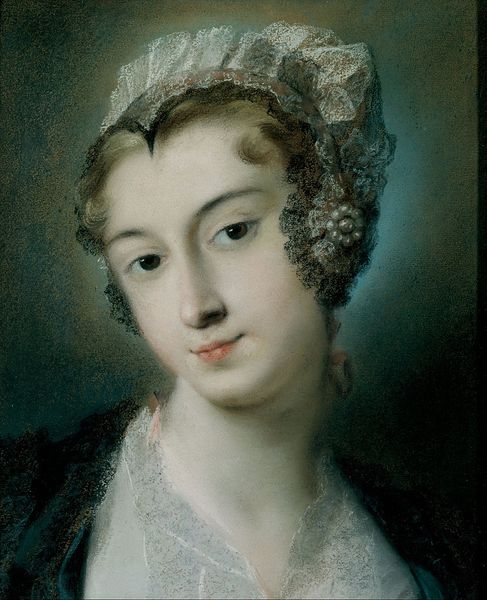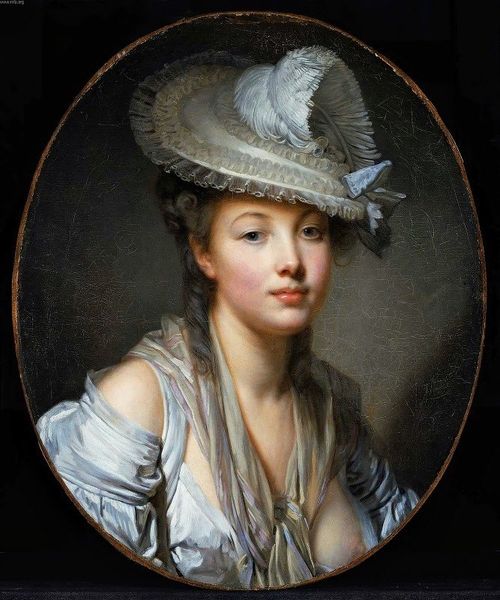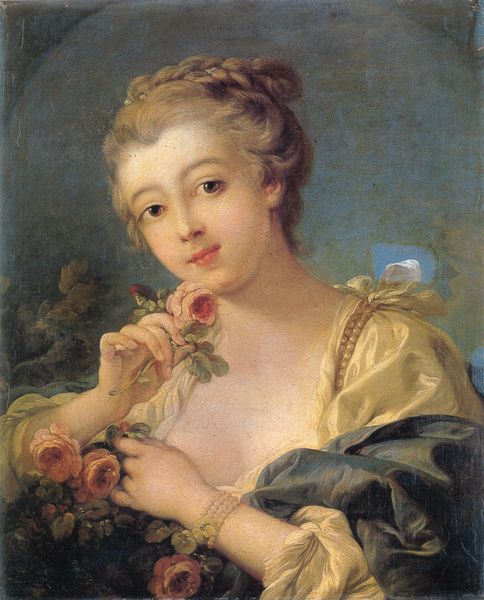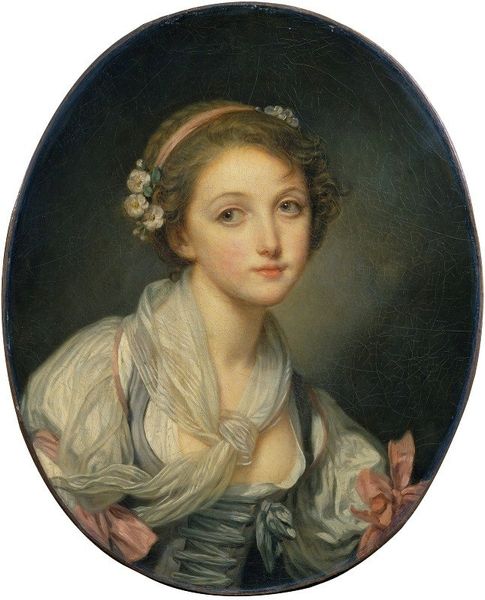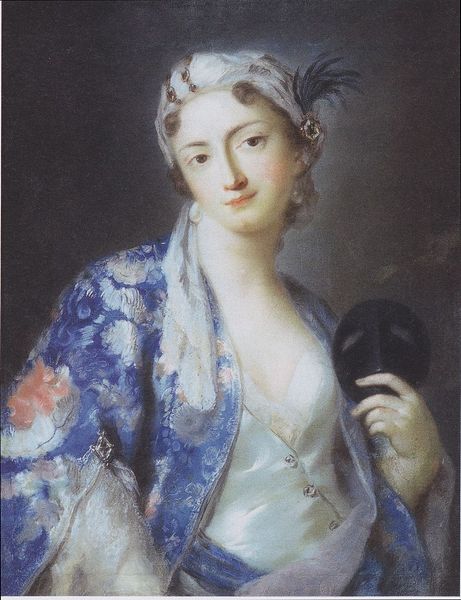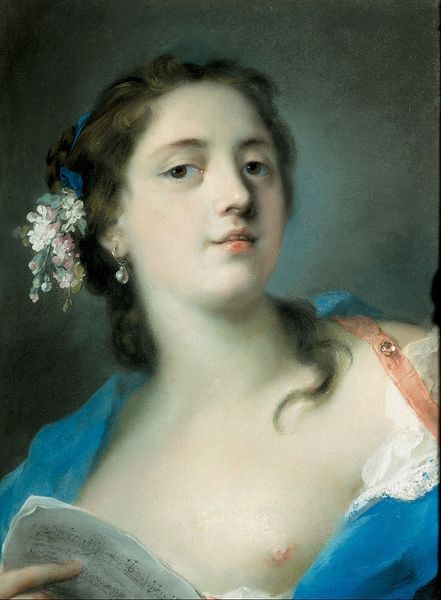
painting, watercolor
#
portrait
#
allegory
#
painting
#
figuration
#
watercolor
#
intimism
#
nude
#
rococo
Copyright: Public domain
Editor: Here we have Rosalba Carriera's "Flora," created in 1739. It's a watercolor painting currently housed in the Uffizi Gallery. The softness of the colors and the subject's delicate features give it an intimate, almost dreamy quality. What strikes you most about this piece? Curator: What I find compelling is the way Carriera uses this mythological figure to subtly comment on the role of women in the 18th century. Flora, the goddess of springtime, is typically depicted with abundant flowers and overt symbols of fertility. Here, Carriera presents her with a knowing gaze, an almost defiant expression. Does this challenge conventional ideas of femininity in the Rococo era? Editor: It’s true, she doesn't look passive at all. So, you're saying the way she's portrayed – her expression, the lack of the typical overt symbolism – is a deliberate choice with social implications? Curator: Exactly. Consider the context: Carriera was a successful female artist in a male-dominated art world. She understood how images were used to reinforce power structures. The fact that this "Flora" feels so individual, so self-possessed, becomes a subtle act of resistance. Were other female artists of this era similarly encoding social messages into their works, do you think? Editor: I hadn’t really considered that before, but it makes total sense. I’ll definitely look into other female artists from that time. Thanks! Curator: My pleasure! Thinking about art through the lens of social context always makes it so much richer.
Comments
No comments
Be the first to comment and join the conversation on the ultimate creative platform.
